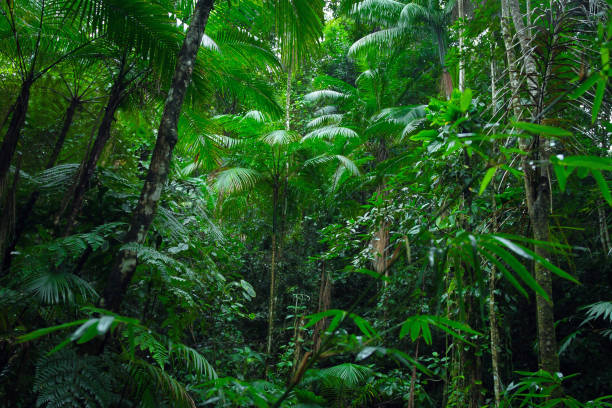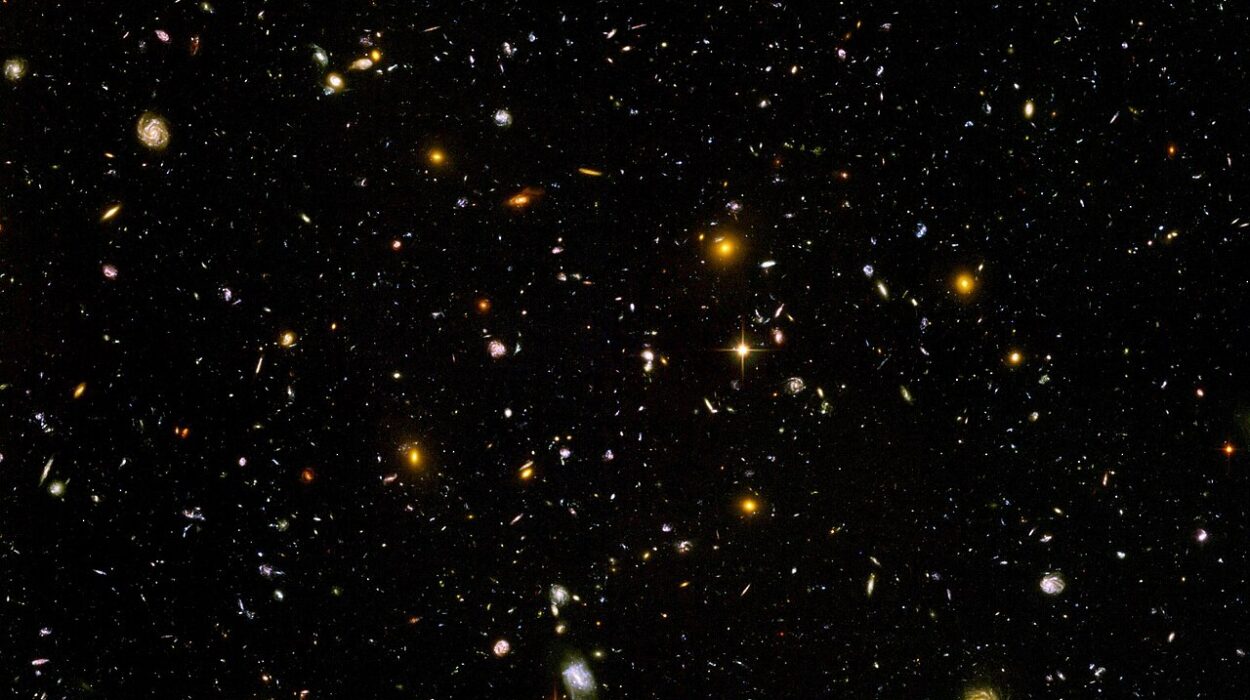The Earth is a living masterpiece—an intricate web of ecosystems, each with its own rhythm, secrets, and wonders. An ecosystem is more than just a physical place; it is a dynamic community where plants, animals, microorganisms, and the environment itself interact in a delicate balance. While all ecosystems are fascinating in their own right, some stand out as truly extraordinary—rare jewels of biodiversity, resilience, and natural beauty.
These unique ecosystems remind us that life can flourish in the most unlikely places, from scorching deserts to the deepest oceans. They show us that survival often requires innovation, adaptation, and sometimes, sheer brilliance. In this article, we will journey across the globe to explore eleven of the most unique ecosystems on Earth—ecosystems so unusual and awe-inspiring that they challenge our very understanding of life.
1. The Amazon Rainforest
The Amazon Rainforest is often called the “lungs of the Earth,” and for good reason. Spanning nine South American countries and covering more than 5.5 million square kilometers, it is the largest tropical rainforest on the planet. This ecosystem is a living giant, producing around 20% of the world’s oxygen and holding an estimated 10% of all known species.
What makes the Amazon so unique is its unparalleled biodiversity. From jaguars and anacondas to poison dart frogs and pink river dolphins, life here has evolved into extraordinary forms. More than 400 billion individual trees spread across 16,000 species create an endless canopy of green.
The Amazon is also home to indigenous communities who have lived in harmony with the forest for thousands of years, relying on its resources while preserving its balance. Yet, despite its size and richness, this ecosystem is fragile. Deforestation, climate change, and exploitation threaten to disrupt the intricate web of life that has thrived here for millions of years.
The Amazon is not only unique for its biodiversity—it is also essential for global climate regulation. It is a reminder that Earth’s ecosystems are not isolated; they are interconnected, and what happens here ripples across the planet.
2. The Great Barrier Reef
Stretching over 2,300 kilometers along the northeast coast of Australia, the Great Barrier Reef is the largest coral reef system in the world and one of the most dazzling ecosystems ever created. So massive it can be seen from space, this underwater wonderland is made up of more than 2,900 individual reefs and 900 islands, forming a vibrant mosaic of life.
The reef is home to over 1,500 species of fish, 400 species of coral, sea turtles, dugongs, sharks, and countless other creatures. Its uniqueness lies not only in its scale but in the way its organisms cooperate—corals are living colonies of tiny polyps that depend on symbiotic algae for survival, building massive structures that shelter countless species.
But the reef’s beauty masks its fragility. Rising ocean temperatures, acidification, and human impact have led to widespread coral bleaching, threatening one of Earth’s most extraordinary ecosystems. Yet, its resilience offers hope, with scientists and conservationists racing to protect and restore it.
The Great Barrier Reef is more than an ecosystem—it is a vibrant cathedral of life beneath the waves, a reminder of nature’s artistry and the need for its protection.
3. The Namib Desert
Deserts may seem lifeless at first glance, but the Namib Desert in southern Africa is one of the most astonishingly unique ecosystems on Earth. Considered the oldest desert in the world, it has existed for at least 55 million years, shaping one of the harshest yet most resilient landscapes on the planet.
Stretching along the Atlantic coast of Namibia, the Namib is defined by towering dunes, some over 300 meters tall, which glow in shades of red and gold. Despite extreme aridity, life flourishes here in incredible ways. Plants like the bizarre Welwitschia mirabilis, which can live for over a thousand years with just two leaves, showcase evolutionary brilliance. Animals like the fog-basking beetle survive by harvesting water from morning mists, while oryx and desert-adapted elephants roam the sands.
What makes the Namib so unique is its marriage of age, harshness, and adaptation. It teaches us that life doesn’t just survive in extremes—it thrives, rewriting the rules of existence.
4. The Galápagos Islands
Few ecosystems capture the imagination quite like the Galápagos Islands. Located off the coast of Ecuador, this volcanic archipelago is a living laboratory of evolution. When Charles Darwin visited in 1835, his observations of the islands’ unique wildlife helped inspire his theory of natural selection.
The Galápagos are home to species found nowhere else on Earth. The giant Galápagos tortoises, marine iguanas (the only sea-going lizards in the world), and blue-footed boobies all evolved in isolation, adapting perfectly to their environment. Each island, shaped by volcanic activity, has its own ecosystem, with variations in climate, vegetation, and wildlife.
What makes the Galápagos truly unique is its role in shaping human understanding of life itself. These islands are not just ecosystems but windows into the mechanics of evolution, where nature’s creativity unfolds before our eyes. Strict protections now help preserve this delicate balance, but tourism and invasive species remain challenges.
5. The Okavango Delta
In the heart of Botswana lies one of the most spectacular ecosystems on Earth: the Okavango Delta. Unlike most river deltas, which flow into oceans or seas, the Okavango empties into the Kalahari Desert, creating a vast inland oasis. Seasonal floods transform the arid landscape into a lush paradise of wetlands, channels, and lagoons.
This dynamic ecosystem supports an astonishing diversity of life. Elephants, lions, leopards, giraffes, hippos, crocodiles, and countless bird species roam freely here. The floodwaters pulse through the land like a heartbeat, dictating migrations, feeding cycles, and survival strategies.
The uniqueness of the Okavango lies in its unpredictability. It is a system of constant change, where water and land dance together in shifting harmony. In 2014, it was declared a UNESCO World Heritage Site, cementing its status as one of Earth’s ecological wonders.
6. The Deep-Sea Hydrothermal Vents
Far from sunlight, at the bottom of the world’s oceans, lies one of the most alien ecosystems on Earth: hydrothermal vents. Discovered in the late 1970s, these vents form along tectonic plate boundaries, where seawater seeps into cracks in the Earth’s crust, heats up, and gushes back out as superheated, mineral-rich plumes.
Despite crushing pressure, total darkness, and extreme heat, life thrives here in astonishing abundance. Giant tube worms, clams, and shrimp cluster around the vents, relying not on sunlight but on chemosynthesis—where bacteria use chemicals like hydrogen sulfide to produce energy.
This ecosystem is unique because it rewrote the rules of biology. Until their discovery, scientists believed all ecosystems depended on sunlight. Hydrothermal vents revealed that life can thrive in complete darkness, powered by Earth’s internal heat. These ecosystems even raise tantalizing questions about the possibility of life on other planets and moons, such as Europa or Enceladus.
7. The Sundarbans Mangrove Forest
The Sundarbans, straddling the coasts of India and Bangladesh, is the largest mangrove forest in the world and one of the most unique ecosystems on the planet. A vast labyrinth of tidal waterways, mudflats, and salt-tolerant trees, the Sundarbans is a place where land and sea blur into one another.
What makes the Sundarbans so extraordinary is its resilience. Mangroves thrive in salty, oxygen-poor soils where few other plants can survive. Their tangled root systems provide nurseries for fish and crabs, while protecting coastlines from storms and erosion.
The Sundarbans is also the last stronghold of the elusive Bengal tiger, which has adapted to swimming across rivers in search of prey. This remarkable coexistence of forest, water, and wildlife makes the Sundarbans a vital and irreplaceable ecosystem—though it faces growing threats from rising seas and human encroachment.
8. Madagascar’s Spiny Forests
Madagascar is often called the “eighth continent” because of its unique biodiversity, and nowhere is this more evident than in its spiny forests. Found only in the southern part of the island, these forests are dominated by bizarre, spiky plants like baobabs and Didiereaceae, which look like creations from another world.
The animals of Madagascar are just as unique. Over 90% of its species exist nowhere else on Earth, including the famous lemurs, chameleons, and countless insects. These forests, adapted to dry and unpredictable climates, showcase life’s ability to innovate.
The spiny forests are unlike any other ecosystem, blending beauty, strangeness, and fragility. Sadly, they are also among the most endangered, as logging and agriculture rapidly shrink their boundaries. Protecting them is not just about saving Madagascar’s uniqueness but preserving one of Earth’s evolutionary treasures.
9. The Arctic Tundra
At the top of the world lies the Arctic tundra, an ecosystem defined by extremes. For most of the year, it is a frozen desert of ice, snow, and permafrost. Yet in the brief summer, the tundra bursts into life, with wildflowers blooming, migratory birds nesting, and animals like reindeer, Arctic foxes, and polar bears roaming the land.
What makes the tundra unique is its resilience to harsh conditions and its role in the global climate system. The frozen soils trap vast amounts of carbon, acting as a crucial regulator for Earth’s atmosphere. But as the Arctic warms at twice the global average, permafrost is melting, threatening to release stored greenhouse gases and accelerate climate change.
The Arctic tundra is a stark reminder that even the most remote ecosystems are deeply connected to the fate of the entire planet.
10. The Everglades
In the southeastern United States lies the Everglades, a vast wetland unlike any other on Earth. Often described as a “river of grass,” it is a slow-moving sheet of water flowing across southern Florida, supporting an extraordinary mix of ecosystems—sawgrass marshes, cypress swamps, mangroves, and coastal estuaries.
The Everglades is home to species found nowhere else, such as the Florida panther, as well as a remarkable diversity of birds, reptiles, and fish. It is also one of the few places where alligators and crocodiles coexist.
What makes the Everglades unique is its hydrology. Its delicate balance of freshwater flow sustains its ecosystems, but human development and water diversion have threatened this balance. Restoration efforts aim to return the Everglades to its natural state, highlighting the importance of protecting this rare and vital ecosystem.
11. The Cloud Forests of Central and South America
High in the mountains of Central and South America, where moisture from the lowlands condenses into mist, lie the enchanting cloud forests. Constantly shrouded in fog, these forests are among the most magical ecosystems on Earth.
The cloud forests are unique because of their perpetual moisture and altitude. This environment nurtures incredible biodiversity, including orchids, mosses, hummingbirds, and amphibians. Epiphytes—plants that grow on other plants without harming them—cover every surface, turning trees into living towers of greenery.
But perhaps the most remarkable feature of cloud forests is their role in capturing water. They act as natural sponges, pulling moisture from the air and feeding rivers that sustain millions of people downstream. Yet climate change threatens to shift cloud levels higher, potentially disrupting this delicate ecosystem.
The cloud forests remind us that ecosystems are not just habitats for wildlife—they are life-support systems for humanity.
Conclusion
From the depths of the oceans to the peaks of misty mountains, from frozen tundras to lush rainforests, Earth’s ecosystems are a celebration of life’s adaptability and resilience. These eleven unique ecosystems reveal the creativity of evolution and the interconnectedness of all living things.
Each ecosystem is not only a marvel in itself but also a vital piece of the planet’s balance. To lose them would be to lose part of Earth’s story—an irreplaceable chapter in the grand narrative of life. Protecting these ecosystems is not simply about conservation; it is about ensuring the survival of the natural wonders that make our planet unique in the universe.






